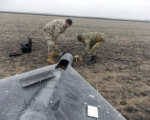Exclusive: Russia Secretly Developing War Drones in China, Intel Sources Reveal

Russia has launched a covert drone production program in China aimed at developing long-range attack drones for use in Ukraine, according to European intelligence sources and documents reviewed by Reuters. The project, led by IEMZ Kupol, a subsidiary of Russian arms giant Almaz-Antey, has reportedly been developing and testing a new drone model, Garpiya-3 (G3), in China with assistance from local experts. Documents show that Kupol informed Russia’s defense ministry that they could produce drones, including the G3, on a large scale at a factory in China to support Moscow’s war efforts in Ukraine.
Kupol and the Russian defense ministry have not commented on these revelations, while China’s foreign ministry denied knowledge of the project, emphasizing strict export controls on unmanned aerial vehicles (UAVs). However, this collaboration, if confirmed, would represent a significant shift in China’s involvement in Russia’s military operations. Previously, China had been providing dual-use components, but full drone systems have not been documented in open sources.
The White House National Security Council expressed concern, stating that while there is no evidence that the Chinese government is involved, it is China’s responsibility to ensure its companies are not providing lethal aid to Russia. NATO and Britain’s Foreign Office echoed these concerns, urging China to halt material support for Russia’s war effort.
Kupol’s G3 drones reportedly have a range of 2,000 km with a 50 kg payload. Invoices indicate that seven drones, including two G3s, have already been delivered to Kupol’s headquarters in Russia for further testing. The European intelligence sources described these deliveries as the first verified evidence of entire UAV systems being shipped from China to Russia since the war in Ukraine began.
The intelligence also suggests that Kupol is working with a Chinese company, Redlepus, to establish a joint drone research and production facility in Kashgar, China’s Xinjiang province. The planned facility, labeled the “Advanced UAV Research and Manufacturing Base,” would produce up to 800 drones annually, although no operational timeline was provided.
Kupol has also proposed the production of a new Chinese-designed attack UAV, the REM 1, with a payload of 400 kg, comparable to the U.S. Reaper drone. While Russia and Ukraine are both racing to increase drone production, China’s potential role in directly supporting Russian efforts could expose Beijing to sanctions. Experts believe this could significantly alter China’s international standing, as it navigates the delicate balance between maintaining its strategic alliances and avoiding punitive global repercussions.





















